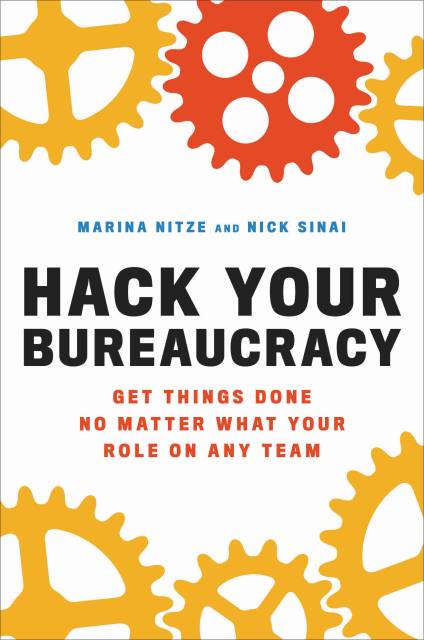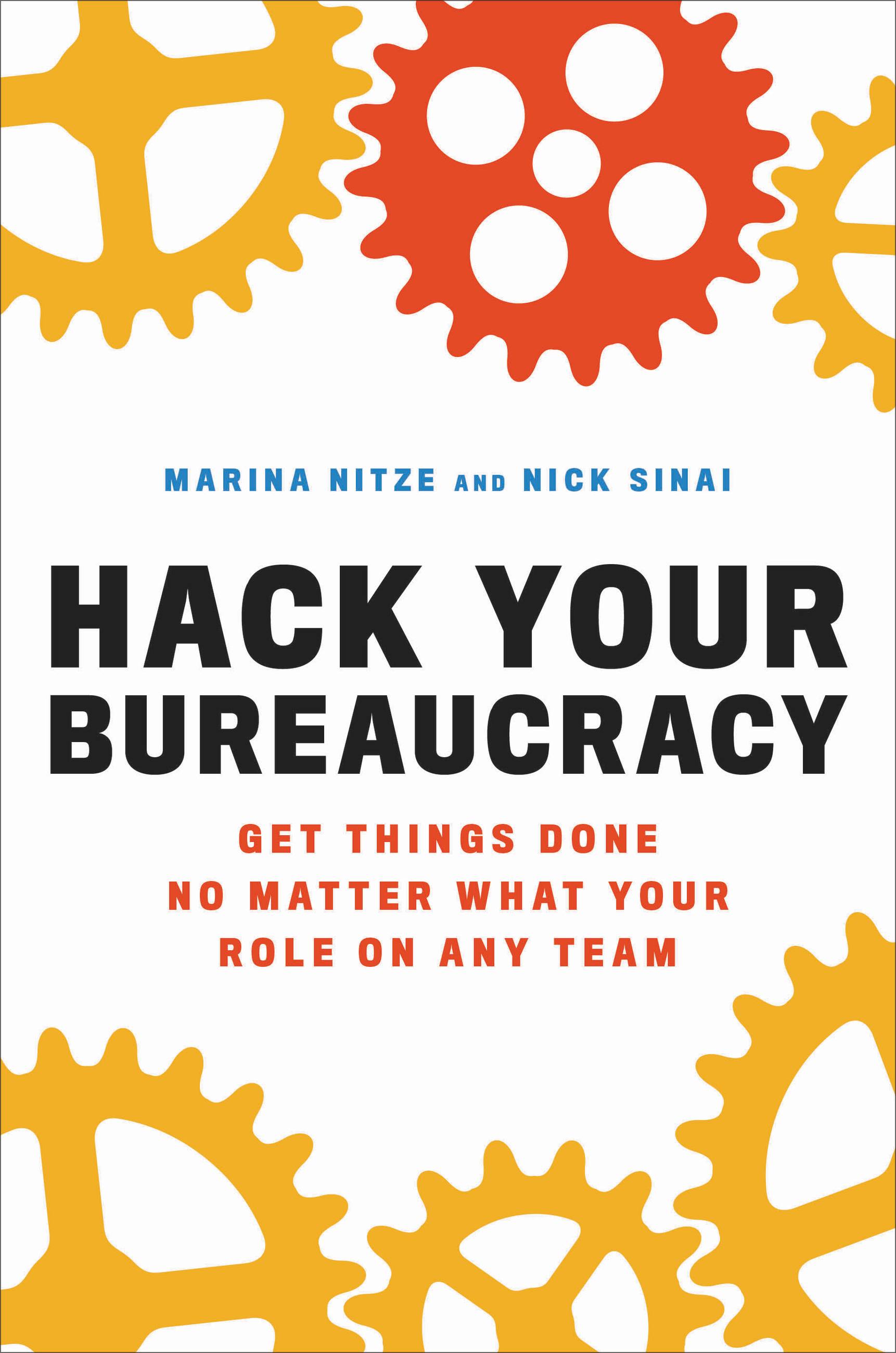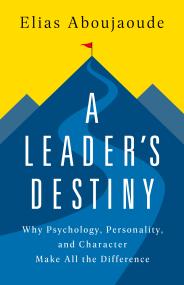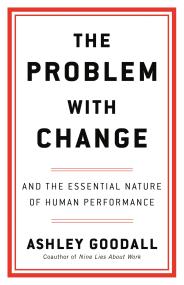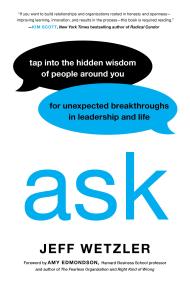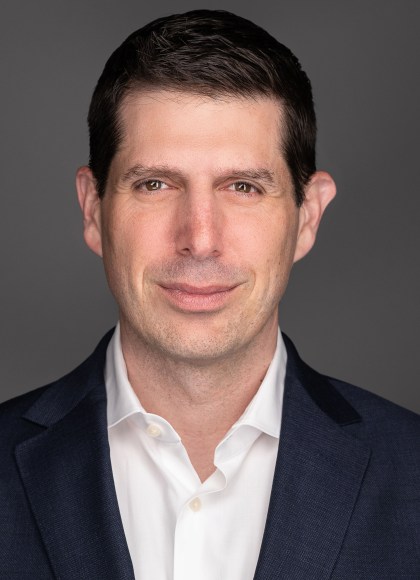Hack Your Bureaucracy
Get Things Done No Matter What Your Role on Any Team
Contributors
By Marina Nitze
By Nick Sinai
Formats and Prices
Price
$30.00Price
$38.00 CADFormat
Format:
- Hardcover $30.00 $38.00 CAD
- ebook $14.99 $19.99 CAD
- Audiobook Download (Unabridged) $27.99
- Trade Paperback $19.99 $24.99 CAD
This item is a preorder. Your payment method will be charged immediately, and the product is expected to ship on or around September 13, 2022. This date is subject to change due to shipping delays beyond our control.
Also available from:
In this "deeply empowering and practical book"(Cecilia Muñoz), two technology and innovation leaders reveal dozens of tactics that enabled them to accomplish seemingly impossible reforms in organizations of all types and sizes.
Whether you just started your first entry-level job, run the entire company, or just feel trapped by your condo association bylaws, it’s time to it’s time to learn how to get big things done and make a lasting impact with Hack Your Bureaucracy.From local government to the White House, Harvard to the world of venture capital, Marina Nitze and Nick Sinai have taken on some of the world’s most challenging bureaucracies—and won. Now, they bring their years of experience to you, teaching you strategies anyone can use to improve your organization through their own stories and those of fellow bureaucracy hackers, including:
- Find Your Paperclip: use small steps to achieve big change
- Set Your North Star: keep your end goal in sight
- Cultivate the Karass: assemble an adept team and network
- Don’t Waste a Crisis: turn every opportunity into a chance for change
- And more!
-
"We think that changing the world requires inspirational leaders, but the truth is that real change is driven by regular people working behind the scenes. This is a deeply empowering and practical book for those people: for anyone, anywhere, who just wants to GET STUFF DONE. Marina and Nick may claim that they're not magicians, but I have watched them in action. The skills that they are passing along in this book feel like magic because they work."Cecilia Muñoz, former Director, White House Domestic Policy Council under President Obama
-
“If you’ve ever been frustrated by red tape, think of this book as a pair of scissors. Marina Nitze and Nick Sinai are master bureaucracy busters, and their experience in the White House shows how you can root out inefficiency in your own backyard.”Adam Grant, #1 New York Times bestselling author of THINK AGAIN and host of the TED podcast WorkLife
-
"I’ve never read a book with so many good ideas. Every page that I read, I kicked myself, thinking back on all the times I tried to make change and failed. If Hack Your Bureaucracy had been written 30 years earlier, I would have accomplished so much more in my life."Steven Levitt, author of Freakonomics and University of Chicago professor
-
"A master class on intrapreneurship. If you want to drive change in large organizations, Hack Your Bureaucracy is a must read."Eric Schmidt, co-founder of Schmidt Futures and former CEO of Google
-
"To tackle the biggest challenges we face on the planet, we will have to make bureaucracies work. Marina and Nick show us how. Practical, insightful, and totally spot-on, Hack Your Bureaucracy is essential reading for everyone from frustrated leaders to ambitious newcomers."Jen Pahlka, Founder, Code for America and former U.S. Deputy CTO
-
“Whether you are revamping your small business, helping to improve the PTA, or leading a scaled organization, this book has something for you. Marina and Nick take solving complex organizational problems and driving outcomes to a new level. Hack Your Bureaucracy is a step-step-guide on how to have impact one practical step at a time. Their bureaucracy hacking advice is thoughtful, tested and useful wisdom for those leading in any sector.”Tara McGuinness, co-author of Power to the Public, founder, New Practice Lab
-
"Nick and Marina are incredibly gifted change agents, and in Hack Your Bureaucracy, they provide hard-won lessons and wisdom that will be invaluable to everyone from entrepreneurs trying to build great companies to innovators working to change institutions of all kinds from the inside out. Like working with Nick and Marina, the book is energizing, inspiring, and an absolute blast— a how-to manual for driving change unlike any other."Todd Park, cofounder of Devoted Health, Athenahealth, and Castlight Health and former U.S. CTO
-
"Having worked for decades in the Defense Department, including having had the top three jobs, I know how important it is to empower people. I’ve seen it with both military service members and DoD civilian employees across a variety of roles: with hustle, grit, organizational savviness, and teamwork, you can take a good idea all the way through successful execution. In Hack Your Bureaucracy, Nick and Marina—world-class bureaucracy hackers themselves—present an actionable and fun guide to getting things done, even in the most challenging of environments."Secretary Ash Carter, former Secretary of Defense
-
"I spent nearly three years as the U.S. Air Force Chief Information Officer working every day to hack my bureaucracy. I wish I knew then what I see now in the straightforward and well-thought prescriptions laid out in this book… a must-read for enlightened organizations and leaders looking to inspire the process changes and cultural mindset shifts necessary to hack their bureaucracies!"Bill Bender, Lt Gen (Ret) USAF, SVP, Customer Excellence, Leidos
-
"Hack Your Bureaucracy should be on the desk of every government official in the land--federal, state, and local. It offers powerful tools to strengthen and expand our democracy by making it work for everyone."Anne-Marie Slaughter, CEO, New America
-
"The U.S. federal government is the largest and most unwieldy living organism in the world. In Hack Your Bureaucracy, Marina Nitze and Nick Sinai use their own experience as agents of change in the civil service to give a master class on how to get things done. This book is essential reading for anybody working in any large institution, not just government."Carl Malamud, Public Resource
-
"A masterful guide to hacking the bureaucracy. Nick and Marina don't just talk the talk. When I was standing up the DoD Joint AI Center (JAIC), the organization took on a completely new life after Nick jumped in to help us. And as a relatively recent military retiree, I can attest that the VA online experience is 50x better today than it was just a few years ago. If you aren't energized by this book, you don't have a pulse!"Jack Shanahan, retired United States Air Force lieutenant general and former Director of the Joint Artificial Intelligence Center
- On Sale
- Sep 13, 2022
- Page Count
- 368 pages
- Publisher
- Hachette Go
- ISBN-13
- 9780306827754
Newsletter Signup
By clicking ‘Sign Up,’ I acknowledge that I have read and agree to Hachette Book Group’s Privacy Policy and Terms of Use
